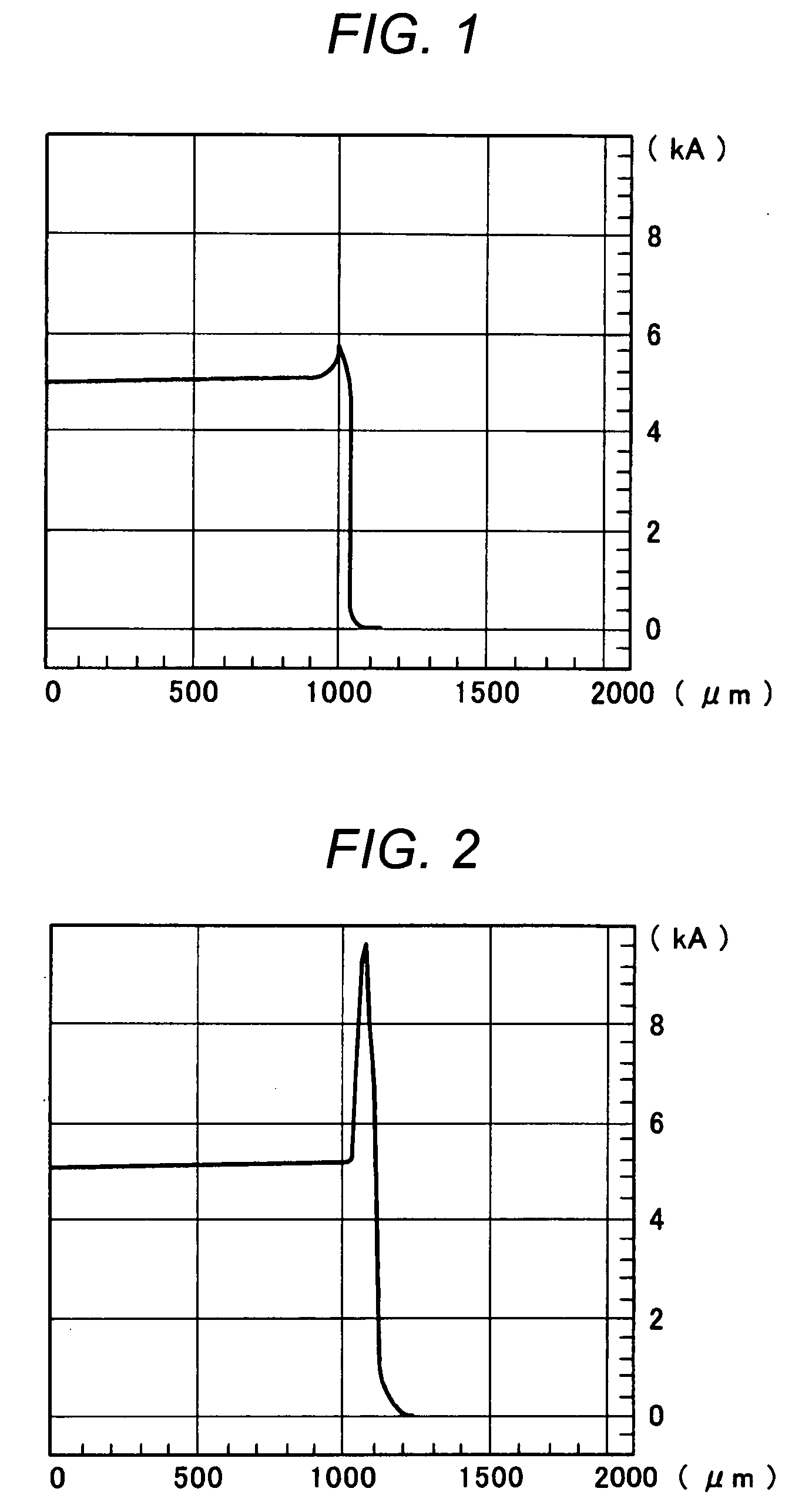Cleaning Liquid for Lithography and Method of Cleaning Therewith
a technology of cleaning liquid and lithography, applied in the field of new cleaning solutions, can solve the problems of not showing good results against the resists of i-line and silicon-containing resists, and not always having good cleaning effects against the other resists
- Summary
- Abstract
- Description
- Claims
- Application Information
AI Technical Summary
Benefits of technology
Problems solved by technology
Method used
Image
Examples
example 1
[0025]A silicon wafer having a diameter of 200 mm was spin-coated with a resist for i-line (a product name “THMR-iP3650”, a product of Tokyo Ohka Kogyo Co.) on a spinner (Model “DNS D-SPIN”, manufactured by Dainippon Screen Mfg. Co.) at a rotation of 2,500 rpm for 10 seconds to form a resist film having a film thickness of 1.35 μm which was heat-treated at 60° C. for 80 seconds.
[0026]Subsequently, a lithographic cleaning solution A, which was prepared by mixing 50 parts by mass of n-butyl acetate and 50 parts by mass of cyclohexanone, was sprayed at 25° C. at a rate of 10 ml / minute through a nozzle arranged at a position of 5 mm apart from a wafer peripheral surface followed by cleaning the peripheral surface of the resist film, and then air-drying for 30 seconds.
[0027]The thus treated peripheral surface of the resist film was scanned with a stylus surface profiler (Model “DEKTAK8”, manufactured by Ulvac, Inc.) to form an enlarged pattern in a cross-sectional direction. The result i...
referential example 1
[0032]A silicon wafer with a diameter of 200 mm was coated with a resist for ArF (a product name “TArF-P6111”, a product of Tokyo Ohka Kogyo Co.), a resist for KrF (a product name “TDUR-P015”, a product of Tokyo Ohka Kogyo Co.) or a resist for i-line (previously described) in the same manner as in Example 1 followed by heat treatment at 100° C. for 60 seconds to form three kinds of resist films each having a film thickness shown in Table 1.
[0033]Subsequently, three kinds of the resist films were cleaned with the cleaning solution A used in Example 1, a lithographic cleaning solution B consisting of 70 parts by mass of propyleneglycol monomethyl ether and 30 parts by mass of propyleneglycol monomethyl ether acetate, cyclohexanone (cleaning solution C) or ethyl lactate (cleaning solution D), at 25° C. at a rotation of 1,200 rpm for 20 seconds on the same spinner as in Example 1 followed by drying at 3,000 rpm for 10 seconds, respectively.
[0034]Subsequently, a remaining amount (μm) of ...
example 2
[0036]A silicon wafer was spin-coated with three kinds of the resists used in Reference Example 1 or a Si-containing resist (a product name “TDUR-SC011”, a product of Tokyo Ohka Kogyo Co.) in the same manner as in Example 1 to form a resist film and then the peripheral surface of the substrate was subjected to a cleaning test in the same manner as in Example 1 by using each of the cleaning solutions A to D used in Reference Example 1 so as to evaluate the appearance by visual inspection according to the following criteria. The results are shown in Table 2.
TABLE 2Si-containingType of resisti-line resistKrF resistArF resistresistType ofA++++++++++++cleaningB+++++++++solutionC++++++++++D++++++++Remarks)+++: No residues recognizable on the peripheral surface.++: Some stain-like residues recognizable on the peripheral surface.+: A large quantity of residues recognizable on the peripheral surface.
[0037]As is clear from Table 2, each of the typical conventional cleaning solutions B to D ha...
PUM
| Property | Measurement | Unit |
|---|---|---|
| Fraction | aaaaa | aaaaa |
| Fraction | aaaaa | aaaaa |
| Fraction | aaaaa | aaaaa |
Abstract
Description
Claims
Application Information
 Login to View More
Login to View More - R&D
- Intellectual Property
- Life Sciences
- Materials
- Tech Scout
- Unparalleled Data Quality
- Higher Quality Content
- 60% Fewer Hallucinations
Browse by: Latest US Patents, China's latest patents, Technical Efficacy Thesaurus, Application Domain, Technology Topic, Popular Technical Reports.
© 2025 PatSnap. All rights reserved.Legal|Privacy policy|Modern Slavery Act Transparency Statement|Sitemap|About US| Contact US: help@patsnap.com

